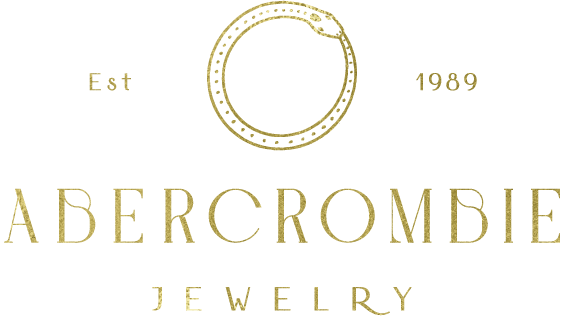Diamond rings are often seen as a symbol of love, but how much do they mean? Are diamond rings worth anything more than sentimental value, or is it another way for the jewelry industry to make money? This article will explore this complex and fascinating topic from an emotional and financial perspective.
The tradition of presenting a diamond ring to someone has endured for centuries. However, the symbolism behind this practice warrants exploration. Is it a sign of commitment or simply an expensive gift meant to impress? What implications come with such a purchase—emotional ones regarding relationships or economic ones regarding investment potential?
The History Of Diamond Rings: How and Why They Became Popular
The lineage of diamond rings is nuanced and extensive, tracing back to the Middle Ages. During this time, diamonds were seen as symbols of power and wealth, so they began to be set in jewelry, such as rings. This trend continued throughout Europe until the 19th century when diamonds became even more popular due to advances in mining technology.
Today, diamond rings are still considered a symbol of status and love – but why? For starters, diamonds are rare gems that require unique extraction methods from deep underground mines; their beauty and sparkle make them alluringly desirable. Additionally, many cultures have associated diamonds with eternal love or commitment due to their strength and durability – something we can all appreciate.
Contemporary discussions have arisen regarding the viability of investing in a costly diamond ring, particularly emphasizing the ecological repercussions of mining endeavors. Ultimately, it’s up to each consumer whether they feel investing in a diamond ring is right for them or not.
What Are The Pros and Cons Of Investing In A Diamond Ring?
Picking the right engagement ring can be a daunting task. From traditional diamond rings to alternatives like colored gemstones, there are many decisions to make. Among the paramount considerations lies the question of the diamond ring’s investment value and its potential return.
The biggest pro for purchasing a diamond for an engagement ring is its durability and beauty; diamonds are strong and resilient, making them perfect for everyday wear. Diamonds also have incredible sparkles that will last forever, making them ideal as symbols of eternal love. Moreover, diamonds have demonstrated a remarkable ability to retain their intrinsic value over extended periods. If you opt to sell your diamond later, you will likely be able to recoup a substantial portion of your initial investment, if not the entire amount.
Conversely, it is crucial to consider the potential drawbacks before investing in a diamond engagement ring. While these precious gems are undoubtedly exquisite, they can be accompanied by a significant price tag. Depending on the chosen stone’s size and quality, the costs may range from a few thousand to tens of thousands of dollars, which may not align with your financial constraints if you are striving to economize in other aspects of your wedding preparations. Furthermore, while diamonds do typically retain their value well over time due mainly to rarity factors such as cut grade or carat weight is difficult (and costly)to replicate artificially – this isn’t always guaranteed either since newer technologies such as lab-created stones have become increasingly popular lately primarily due from improved affordability compared with naturally mined counterparts.
With all these considerations taken into account, though, there may remain some viable options outside of simply opting solely between ‘traditional vs. modern’ types when deciding upon what type of stone(s) should go into crafting your particular piece: other valuable stones (such as sapphires), unique settings (like those containing multiple stones ), or even combinations thereof – all offer up intriguing possibilities worth exploring further.
Alternatives To A Traditional Diamond Ring: Other Valuable Stones Or Setting
Many couples still opt for diamond rings when making a statement with an engagement ring. If one is seeking a unique or cost-effective option, there exists an assortment of alternatives that possess equal significance and worth.
Consider other precious stones such as sapphires or rubies instead of diamonds. The assortment of hues and dimensions in which these precious stones are available renders them a visually striking addition to any jewelry collection, all while remaining a cost-effective option. Plus, they may even have additional cultural significance depending on their hue—for example, blue sapphires symbolize loyalty, while red rubies signify passion.
If you’d instead stick with diamonds but don’t have the budget to get one that’s too big or expensive, look into settings like halo designs which feature smaller stones surrounded by larger ones to create the illusion of a single large stone. This type of setting is cost-effective and adds visual interest since each diamond catches the light differently, creating a unique sparkle all its own!
No matter what type of gemstone you choose or the setting you go with, remember that it doesn’t have to be an expensive diamond ring to symbolize your love and commitment—all that matters is finding something unique that has meaning for both partners and the relationship.
Diamond rings have been popular engagement gifts since the late 1800s. They are expensive and often come with significant financial risks. Nonetheless, they are an emblem of enduring devotion and loyalty. Alternatives to traditional diamond rings include other precious stones or settings, such as rubies or pearls, which can offer similar sentimental value at much lower prices.
Whether a diamond ring is worth depends on its purpose and financial situation. If you’re looking for an investment opportunity, diamonds may not be the best option; however, if you’re looking for something special to celebrate your love, there’s no better way to get engaged with a beautiful piece of jewelry.
Before investing in a diamond ring, it is imperative to conduct comprehensive research by seeking advice from industry experts and conducting a comparative analysis of various retailers. This will ensure that you obtain optimal value for your investment.
